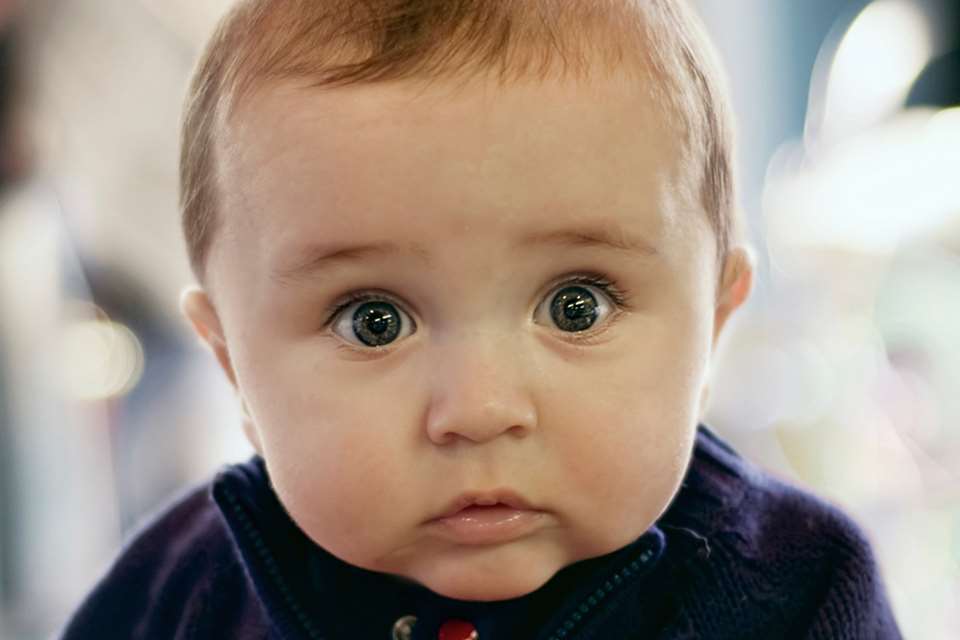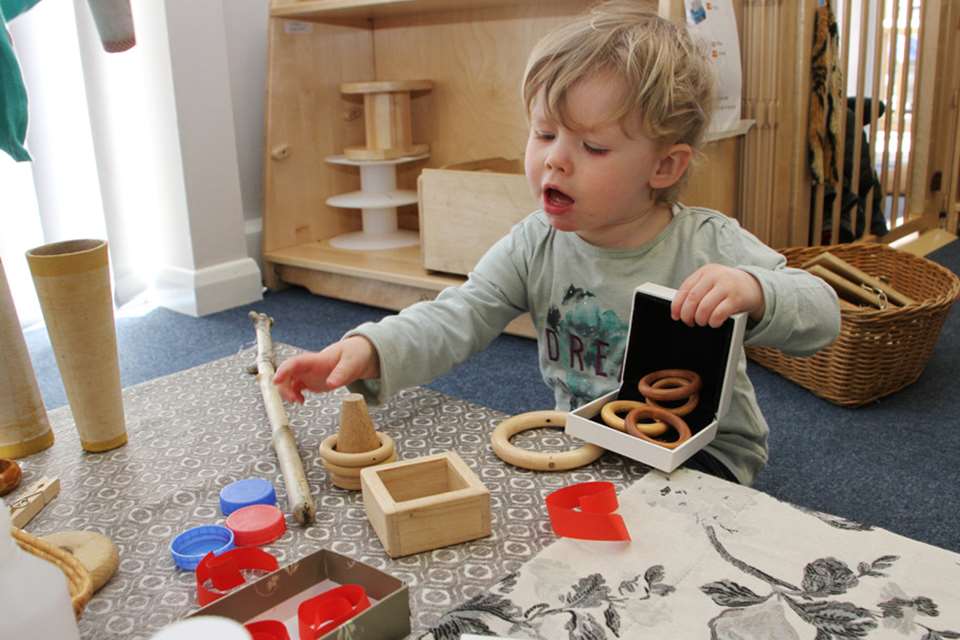A Unique Child: Mindfulness - In the here and now
Marion Dowling
Monday, May 30, 2016
The ability to engage in mindfulness is an important life skill to teach young children in today’s fast-paced world, says Marion Dowling
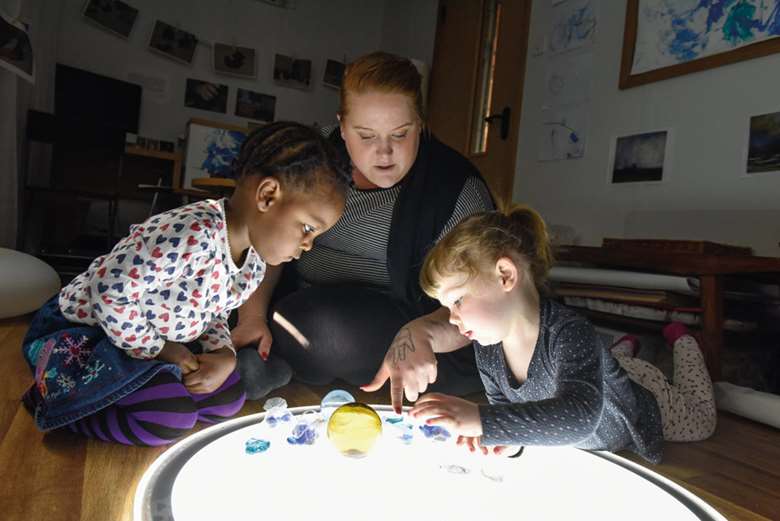
We recognise ‘mindfulness’ as living in the present, enjoying and being fully aware of the ‘here and now’. How many of us taking the train to work have not been aware of the changing scenery outside while thinking about a meeting later that day – or, having driven to work, on arrival have no recollection of how we got there. While travelling, our minds were preoccupied with the past or plans, hopes and anxieties about the future. We are living our lives on automatic pilot.
Of course, it’s not possible or wise to always ignore previous experiences and never plan ahead, but all of us should recognise the importance and benefits of paying attention to ‘now’ and savouring what is offered.
Very young babies rapidly recognise their mother’s milk, voice and smell, but for the most part they have a hazy sense of the past and future. Thinking in the present in the early months of life, a baby believes that if something or someone disappears from sight, it no longer exists. Margaret Donaldson suggested that this living in the present, which she called ‘the point mode’, is also apparent in young children.
As parents and practitioners we all recognise this as we amble along with an infant and make slow progress in order for them to examine a seemingly ordinary stone or daisy. Bending down, the infant focuses deeply on their discovery, using their senses to find out more. One has only to realise how frequently small children are transfixed by such moments to understand how natural and universal the point mode is to childhood.
Mindfulness means being able to focus, and this skill develops as a child matures. Ferre Laevers suggests that we can easily recognise a child’s high level of focused involvement when they are absorbed and engaged intensely in an activity. They concentrate hard and persist in what they are doing, seemingly impervious to any distraction.
This behaviour reflects strong motivation, and truly absorbed awareness is described by the social psychologist Mihaly Csikszentmihalyi as ‘flow’. He says that this occurs when a person is totally immersed in something that really interests them and demands their undivided attention. However, although this comes naturally to children, like adults, children’s lives can now be too ‘busy’, leaving them little time and scope to focus on an experience, mull things over and make links in their learning. A child’s clear mind can be obscured by the mental chatter of frantic activity. The organisation and management of many early years settings encourage children to keep occupied and busy; importantly, busy-ness does not equate with mindfulness.
THE HURRY-ALONG CURRICULUM
Our education system is increasingly seen as a means of satisfying the demands of industry and commerce. The powerful evidence from neuroscience that babies are born thinking and learning and that close adults can aid this process can lead to the questionable practices of ‘hot-housing’ very young children.
Eager parents, wishing to push their infants onto the ladder of success, can easily find a market of materials that promise impressive results. One survey from the US shows that 65 per cent of parents believe that flashcards are very effective in helping two-year-olds develop their intellectual capacity. Sue Gerhardt wisely counters this enthusiasm and argues for the prime importance of social contact, writing: ‘The first higher brain capacities to develop are social, and they develop in response to social experience. Rather than holding up flashcards to a baby, it would be more appropriate to the baby’s stage of development to simply hold him and enjoy him.’
There are also increasing concerns about the current Government’s thrust on raising standards and pushing children to achieve as much as possible as early as possible rather than allowing them to enjoy an unpressured childhood and learn at a pace appropriate to their stage of development.
SCREEN-BASED TECHNOLOGY
Although we know that first-hand experiences are the most valuable for very young children, exposure to books and pictures also plays a very important role.
The reality is also that children are increasingly exposed to screen media. If we accept this (an unpalatable fact for some), we find that studies suggest infants can be critical viewers, often deciding what they want to watch, showing when they are bored and attending with interest to certain programmes.
Despite these upbeat examples, there remains the question of whether exposure to screen viewing is beneficial for very young children. Aric Sigman points to research that implies a link between viewing television and attention deficit, and he cites a study of one- to three-year-olds which found that even background television reduced the length and quality of the children’s play.
The jury is still out on the relative merits of introducing screen-based learning to babies and infants, and selective evidence (much of which relates to older children) can be used to support either view. However, findings from a number of studies strongly suggest that exposure to television under the age of three can impede a child’s ability to learn at a later age, with symptoms including a limited attention span, poor concentration and being easily distracted.
Professor Susan Greenfield suggests that these difficulties persist, with a screen-based lifestyle providing ‘a gratifying, easy-sensation “yuk and wow” environment, which doesn’t require a young mind to work… We cannot park our children in front of the TV and expect them to develop a long attention span.’
Common sense tells us that it is incredibly difficult for young children to be mindful, focused and calm in a culture that is dominated by a constant flow of information.
MISSING OUT ON TIME TO LEARN
Time is a precious commodity, and in early years settings it constantly seems to be in short supply. Practitioners are only too aware that there is a great deal to get done. Often in a busy nursery or classroom, and particularly when practitioners feel under pressure to carry out their planned agenda and ‘fit’ everything in, the daily programme is fragmented into segments – greeting time, time for play, toilet time/nappy change, snack, play outside, rest and so on. This programmed approach can create stress for adults, who may clock-watch to make sure that they keep to time.
More importantly, although a compartmentalised and inflexible programme may provide a structure for practitioners, it does not meet the needs of young children who are not given enough time to reflect on and collect their thoughts. Alison Gopnik makes the message clear: ‘An animal that depends on imagination has to have some time to exercise it. Childhood is that time.’
In Jacqui Cousin’s classic study Listening to Four Year Olds, children talked of being too hurried to play. When play is permitted, Reception teachers admit to adopting a more controlling role. ‘We cut it short…stop them…interrupt…it must be irritating for the children.’
One little girl’s comments from the study poignantly sum up children’s confusion about the pressure: ‘Hurry up! Hurry up! It time!&What it time for?’
Seventeen years after this study was completed, the Government’s directives for curriculum coverage and outcomes sadly mean that teachers still struggle to adopt a relaxed pace with plenty of time available for children’s own initiatives.
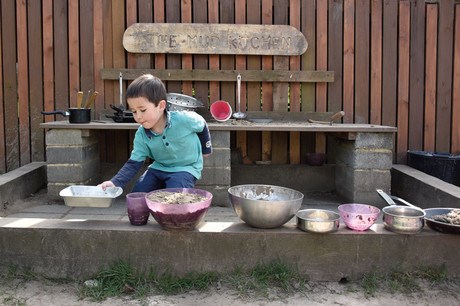
NURTURING MINDFULNESS
Enable children to find their element
Ken Robinson, visionary author and adviser on education and the arts, defines ‘element’ as the meeting point between natural aptitude and personal passion. He sees it in those people who have discovered something that really engages them. This deep involvement often means they focus, work hard and become successful.
All of us invest our energies when we are involved in activities that absorb us. However, our aptitudes will only be realised if we have the opportunities to discover them.
Adults are able to create opportunities by seeking out kindred spirits, planning new adventures or changing jobs. Children cannot always make these choices; they may have the potential to shine in numerous ways, but not have the chance to discover what they are. This implies adults are responsible for introducing children to new events and interests, some of which really engage them and may help them to find their element.
Even if initial enthusiasms die away, children still benefit from having had the chance to focus on a new experience.
Those of us who work with young children on a day-to-day basis recognise that by providing them with rich encounters, observing and building on their positive responses and interests, we are going with the grain of their learning and well-being. Conversely, if we ignore their interests and insist children fit in with our ideas and programmes, we may go against the grain.
Help young children to focus
We must recognise the benefits of activity. Children are more engaged and focused when engaged in practical activity – for example, in group games, or when involved with small- and large-scale play.
Their brains are activated by simply moving objects around, which can also apply to adults who doodle in meetings. This seemingly aimless activity enables them to have a better memory recall.
Encourage mindful breathing
Arrange a time daily when you and the children sit quietly and become aware of your breathing. A four-year-old should be expected to sit and become mindful initially for only around three to four minutes. Ask the children to close their eyes and become aware of breathing in through their nostrils and out through their mouths. Any thoughts that rush into their minds should be pushed away.
Practise ‘stilling’
Although most children are noisy and exuberant, they can also appreciate peace and tranquillity. In our materialistic society, we should help children look for resources within themselves.
Through practising ‘stilling techniques’, children learn over time to control and concentrate their minds and bodies. They lie on the floor, empty their minds and open their ears to listen – in one stilling session, a little girl said that to really listen, you have to be still both inside your body as well as outside it.
Mindful walking
Mindful walking will help children to become more aware of their body as it moves. Ask your children to walk slowly and carefully around a room, putting each foot down carefully and smoothly as if walking on the moon.
Encourage them to feel the muscles in their legs when they walk and to notice their hands and arms in space. Ask them to move a little faster, then more slowly and then to stop. While concentrating on these movements, children should push other thoughts away.
Be a role model
Young children are hugely influenced by the behaviour of close adults around them. They will note and respond to adults who demonstrate that they are keeping their minds clear of thoughts and just concentrating on the moment.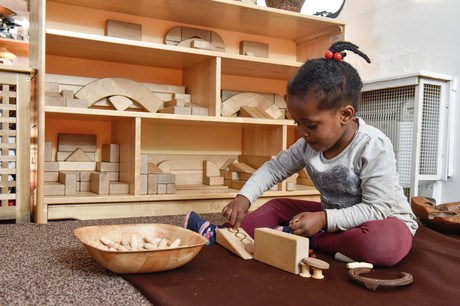
BOOKS FOR CHILDREN
The Lemonade Hurricane: A Story of Mindfulness and Meditation, by Licia Morelli and Jennifer Morris (Tilbury House Publishers)
Mindful Monkey, Happy Panda, byLauren Alderfer and Kerry Lee MacLean (Wisdom Publications)
REFERENCES
Dubiel, J (2014) ‘Learning and Development: Measuringup’ in Nursery World, 22 September 2014.
Csikszentmihalyi, M (1988)Optimal Experience: Psychological Studies of Flow in Consciousness. Cambridge University Press
Nutbrown, C and Page, J (2008)Working with Babies and Children: From Birth to Three. Sage
Gerhardt, S (2004)Why Love Matters. Sage
Gopnik, A, Meltzoff, A and Kuhl, P (1999)How Babies Think. Weidenfield & Nicolson
Sigman, A (2007)Remotely Controlled: How television is damaging our Lives. Vermillion
Sigman, A (2011) ‘Does not Compute. Re-visited Screen Technology in Early Years Education’ in House, R (ed)Too Much, Too Soon?. Hawthorn Press
Greenfield, S (2015)Mind Change. Random House
Gopnik, A (2009)The Philosophical Baby. Bodley Head
Cousins, J (1999)Listening to Four Year Olds. National Early Years Network/National Children’s Bureau
Robinson, K (2009)The Element: How Finding Your Passion Changes Everything. Penguin
Play-based curricula and child engagement in their learning will be key subjects at our London conference, ‘Self-regulation: the key to effective learning’, on 30 June. For more information, go to www.selfregulation.co.uk




